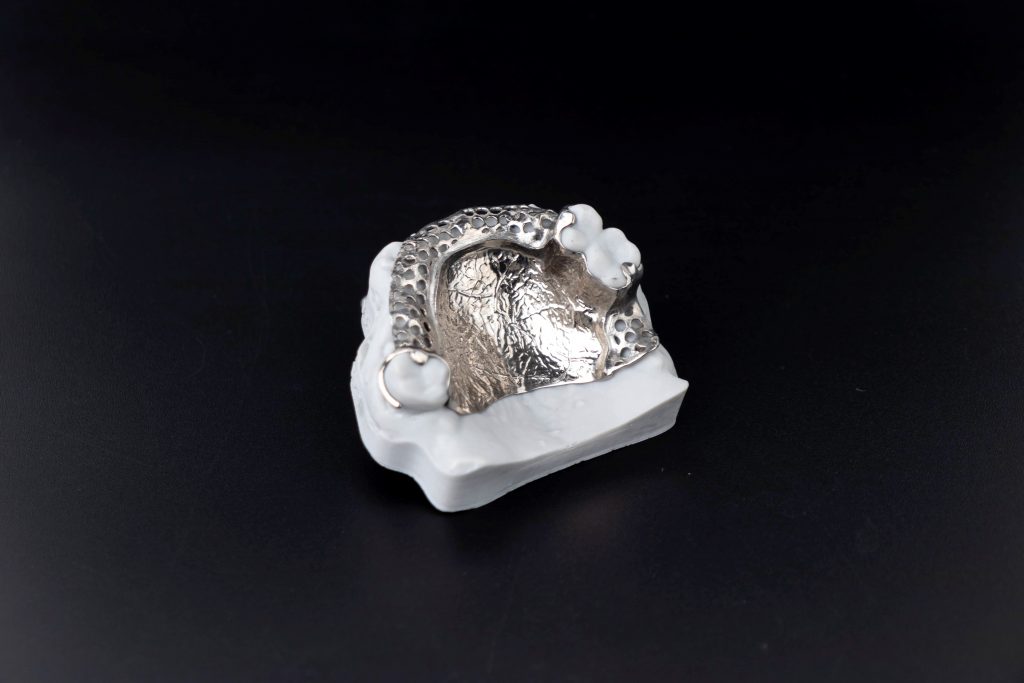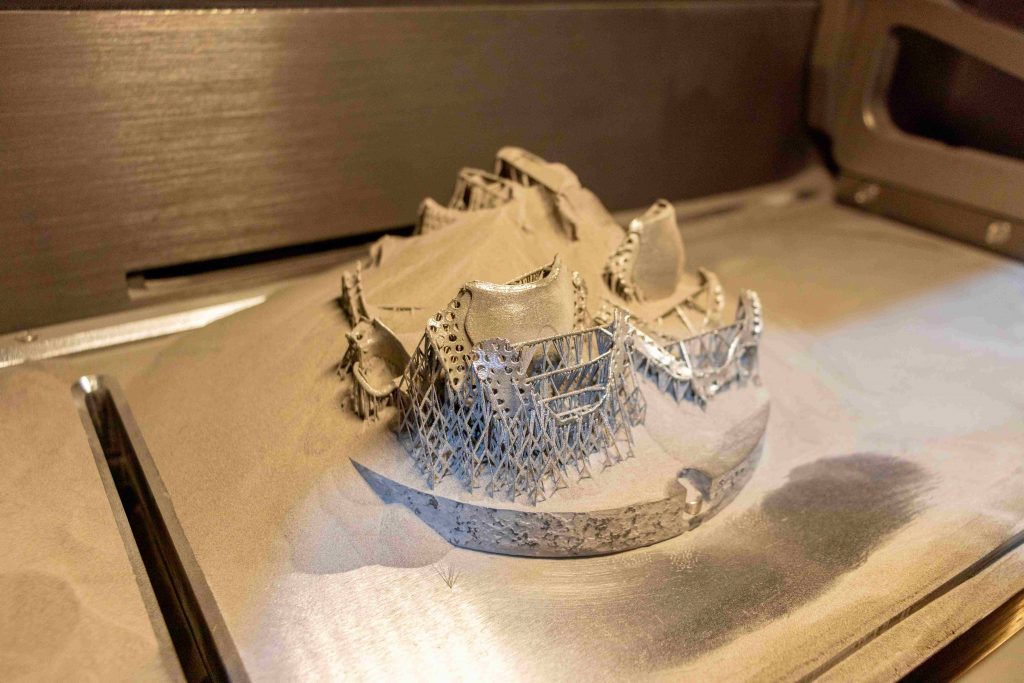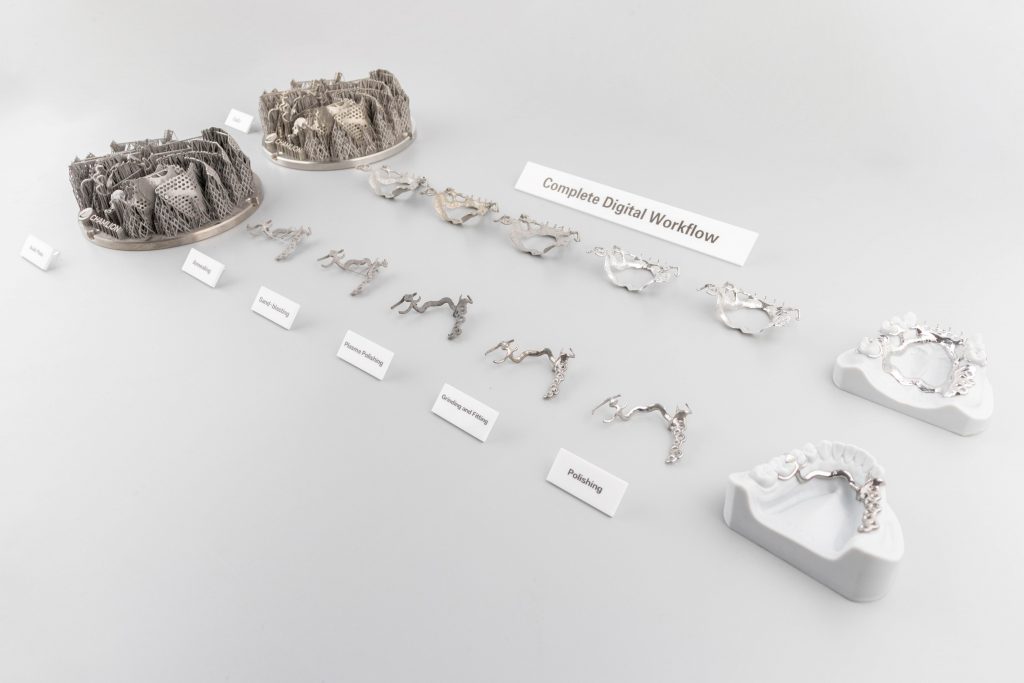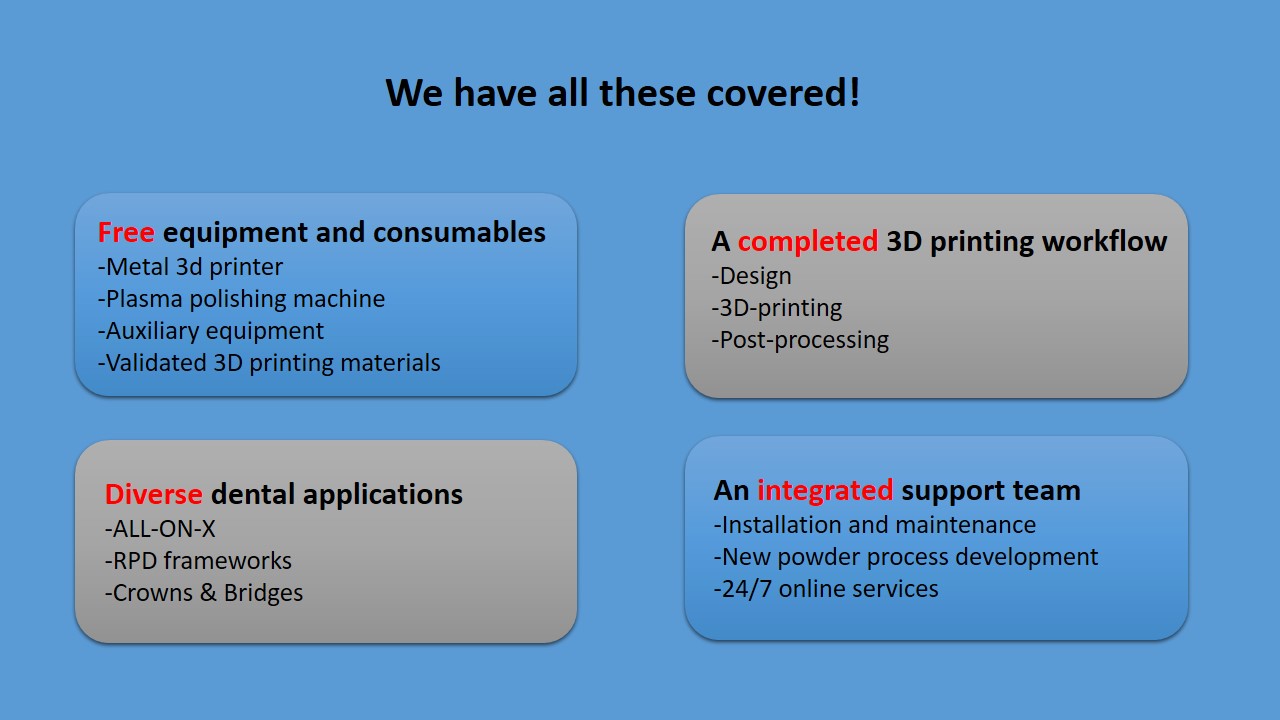 +86 25 6959 0453
+86 25 6959 0453
 sales@chamlion.com
sales@chamlion.com
2020 官网升级中!现在您访问官网的浏览器设备分辨率宽度低于1280px请使用高分辨率宽度访问。
The integration of 3D printing technology in dentistry, especially for fabricating titanium components, is transforming dental labs’ operations. Here’s why dental lab owners should consider this innovative approach for creating dentures, implant bars, and RPDs (removable partial dentures).

Advantages of Titanium in Dentistry
Titanium is prized in dentistry for its exceptional properties:
1. Biocompatibility: Titanium is highly compatible with human tissues, reducing the risk of allergic reactions and ensuring long-term success of dental implants.
2. Strength and Durability: It offers unmatched strength, ensuring dental appliances last longer and perform better under stress.
3. Corrosion Resistance: Titanium withstands the oral environment’s corrosive conditions, maintaining its integrity over time.

Advantages of 3D Printing Titanium Dentures Compared to Milling
1. Material Efficiency and Cost-Effectiveness
Reduced Material Waste: Milling titanium involves cutting away material from a solid block, resulting in significant waste. In contrast, 3D printing builds the denture layer by layer, using only the material necessary for the final product.
Cost Savings: Less waste means lower material costs, which is particularly important given titanium’s high price.
2. Time Efficiency
Faster Production Times: 3D printing can produce complex shapes and structures in a single step, reducing the overall production time. Milling often requires multiple steps and setups to achieve the same complexity.
Streamlined Workflow: The digital nature of 3D printing allows for quicker transitions from design to final product, minimizing delays and enhancing productivity.

3. Complex Geometries
Design Flexibility: 3D printing can create intricate and complex geometries that are difficult or impossible to achieve with milling. This capability is crucial for producing detailed and precise denture frameworks.
Optimized Structures: The ability to print complex internal structures can improve the strength and functionality of titanium dentures without increasing weight or material use.
4. Environmental Impact
Reduced Carbon Footprint: 3D printing generates less waste and requires less energy compared to milling. This efficiency makes it a more environmentally friendly option, aligning with the growing emphasis on sustainable practices in dental labs.
Energy Efficiency: The additive nature of 3D printing is generally more energy-efficient than the subtractive process of milling, contributing to lower overall energy consumption.

For dental lab owners looking to enhance efficiency and reduce costs in creating titanium components, 3D printing is a game-changer. Not only does it offer superior material properties essential for dentistry, but it also provides a more cost-effective, time-efficient, and environmentally friendly alternative to traditional milling methods.
Contact us Now to discover how our 3D printing solutions can elevate your lab’s capabilities and keep you ahead of the curve in titanium dentistry!
